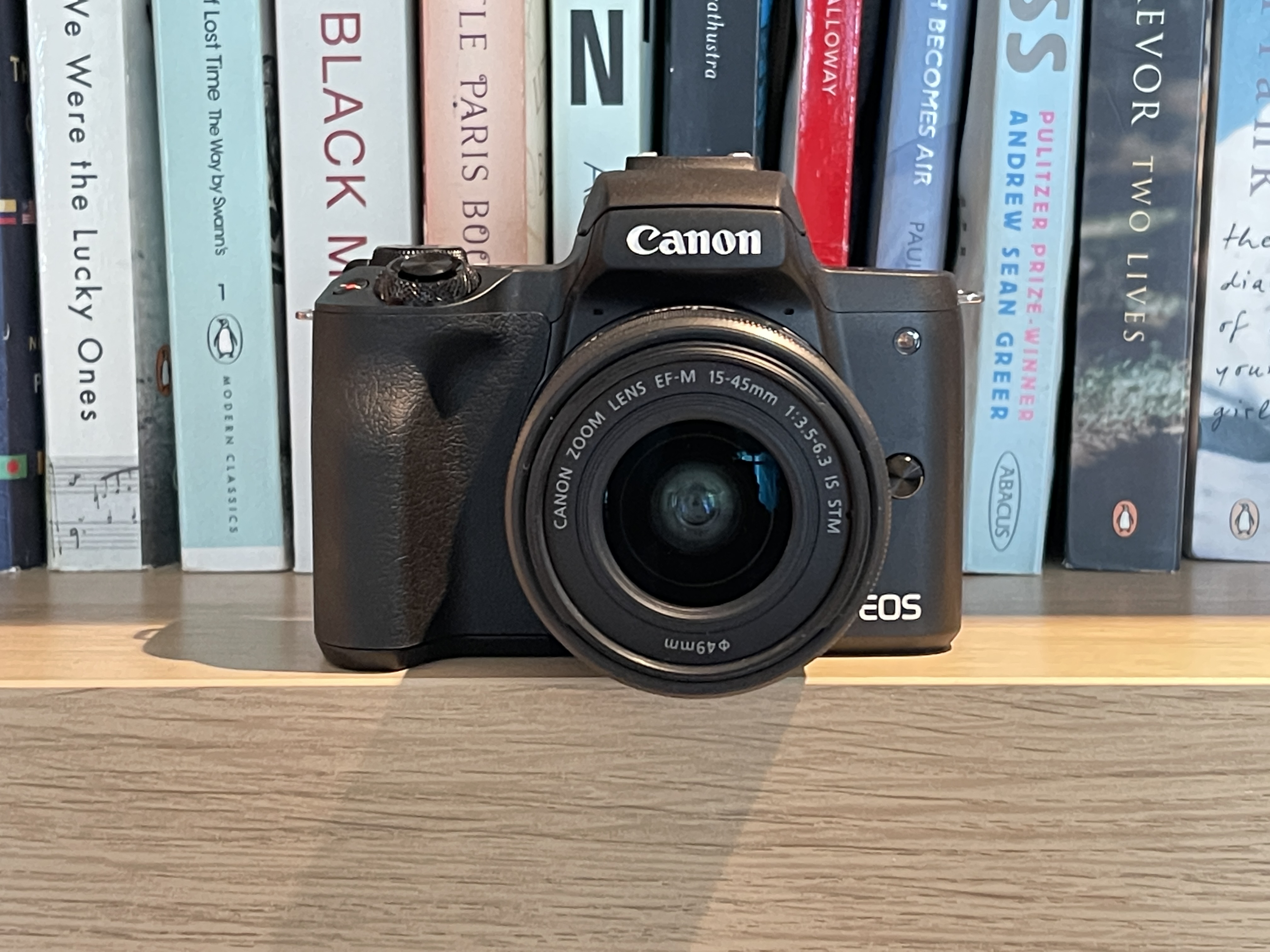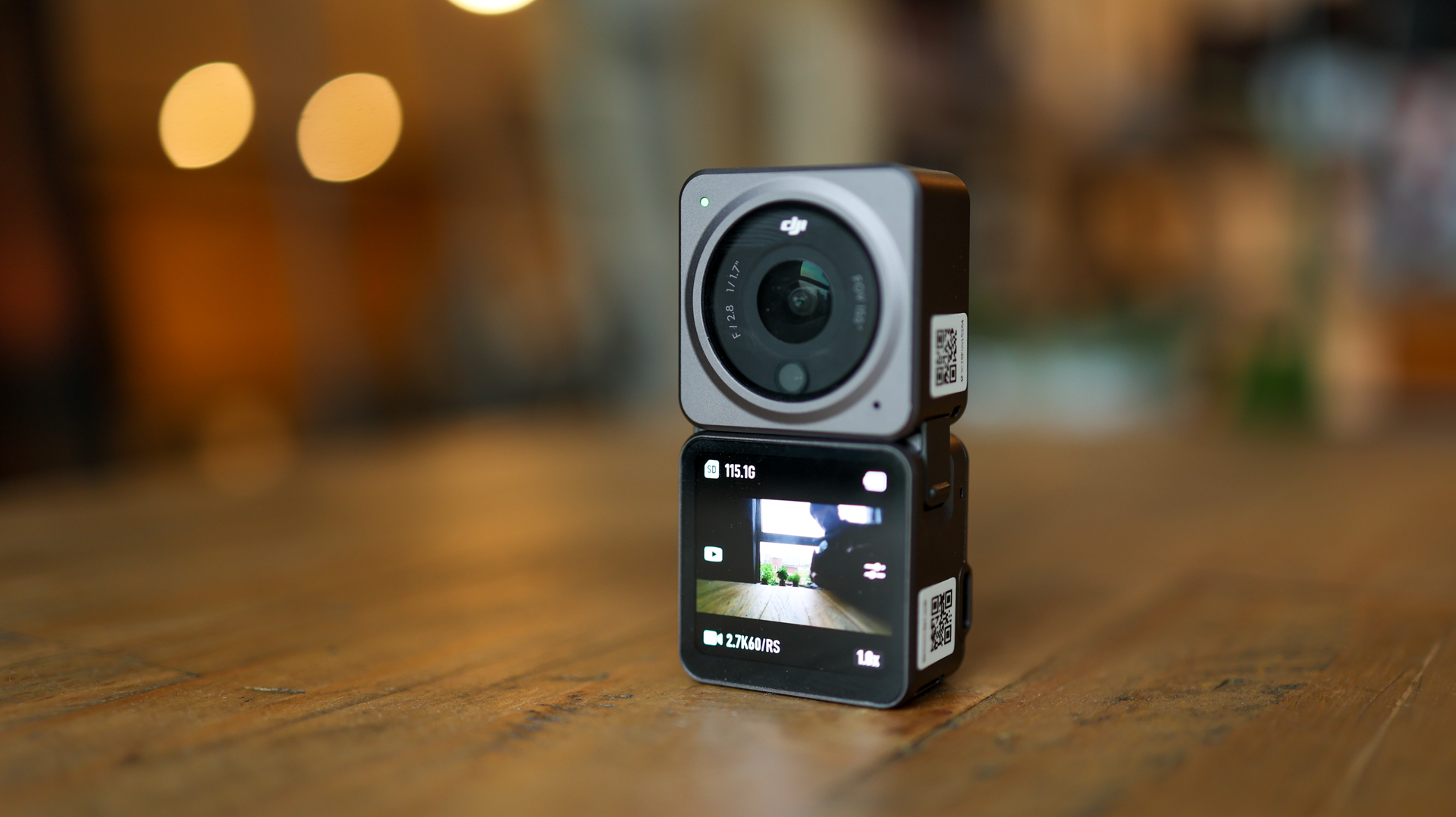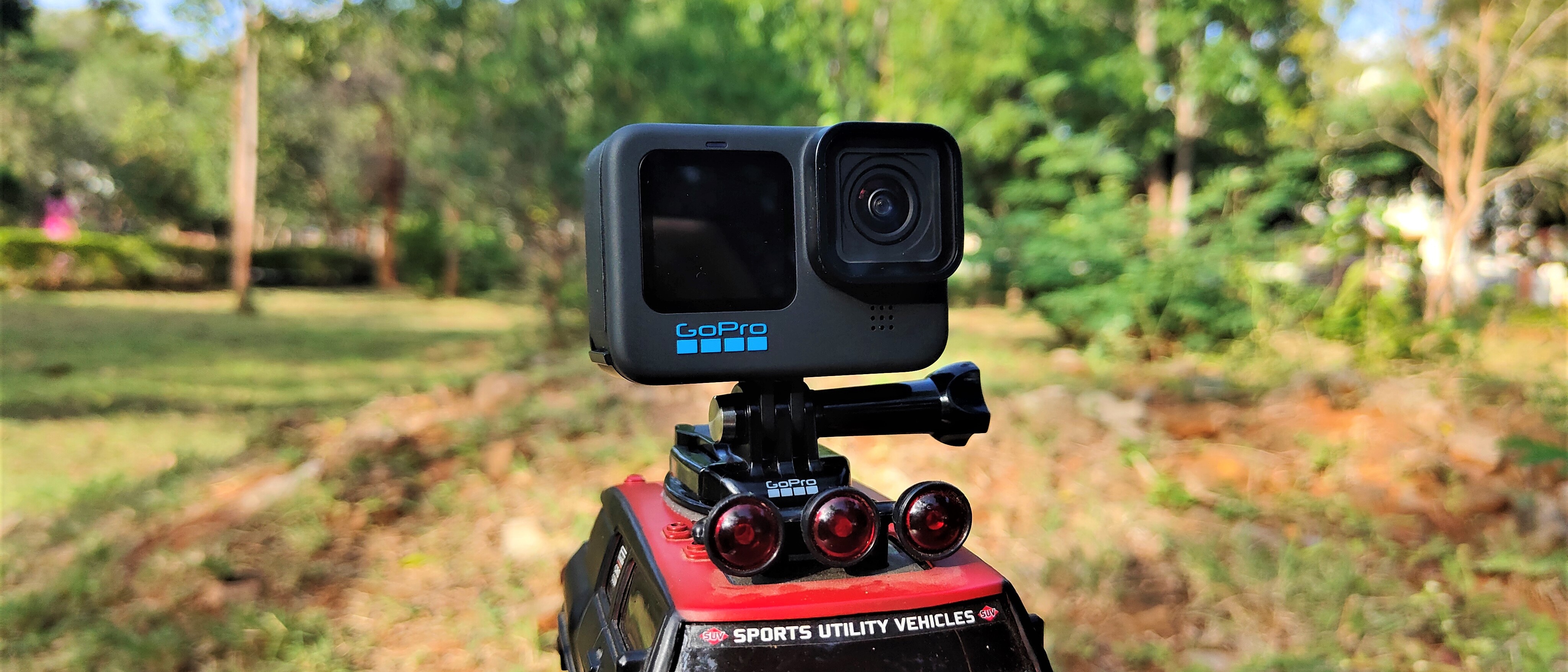Reviews

Great Joy 60mm T2.9 1.33x anamorphic review
DPReview Latest |
We’ve seen numerous lower-cost anamorphic lenses come to market over the past few years. Sirui has been behind many of these budget-friendly anamorphic lenses, including four focal lengths designed for APS-C and MFT cameras, and more recently a 50mm for full-frame. While Surui's lineup has been a welcomed addition to the filmmaking world, there are those who've complained the 1.33x squeeze of these lower-cost lenses doesn't offer enough of a dramatic anamorphic effect. Enter Great Joy, with its new 60mm T2.9 1.33x anamorphic lens and 1.35x adapter.
The lens is designed for full-frame sensors and on its own produces a 1.33x squeeze. To satisfy those wanting more squeeze, Great Joy has also developed an optional adapter that multiplies the built-in squeeze by 1.35x to give us a much more anamorphic 1.8x (well, 1.7955x) effect.
This new pair is exciting because we don’t usually get 1.8x anamorphic lenses on a budget–and certainly not for full-frame sensors. The next lowest-cost 1.8x anamorphic for full-frame cameras comes from Vazen, and will cost you $8000. This Great Joy lens and adapter combination costs just $1,600: $999 for the lens and $599 for the adapter–though the two cost $1249 on the company's Indiegogo campaign page. Shipping begins next month, so the lenses are already in mass production.
The lens
 |
We don’t often come across 60mm lenses, so this Great Joy lens stands out from the field. Of course, with its 1.33x anamorphic factor, the lens gathers light from the same horizontal angle of view we’d expect from a 45mm lens.
 |
The lens has a metal barrel with a smooth semi-gloss black finish and engraved markings filled with white paint indicate distance and apertures. The aperture markings are visible from either side of the lens, but focus information is displayed only on the left side of the barrel. The focus and aperture rings feature built-in metal gears for follow-focus equipment.
Inside, we find 13 elements in 10 groups, including four cylindrical elements that make up the anamorphic group to distort the image. Other features include an eleven-blade iris, a minimum focusing distance of 70cm (27.5") and a focus throw of 196°. The minimum aperture is T16, and remarkably we get evenly spaced markings in third-stop increments right through to the maximum T2.9 position. Low-cost lenses often compress the space between the extreme aperture settings, so Great Joy's attention to detail here is a welcome change.
 |
When you look through the glass cover at the front of the lens you’ll see the usual oblong-looking baffle, and the oval shaped opening created by the anamorphic group’s position at the front of the lens construction. Placing the anamorphic group at the front and forward of the iris gives us a better chance of achieving some flare (we see you Michael Bay) and those much-loved oval bokeh.
The front section of the lens also carries a 67mm thread. This is obviously to accommodate filters, but also to allow us to attach Great Joy’s 1.35x adapter that increases the squeeze effect.
 |
The rear of the lens features a plain mount that does not offer electrical contact with the camera, so EXIF data isn’t recorded and all aperture and focusing adjustments need to be handled manually. The lens comes in fittings for L-Mount Alliance, Nikon Z, Canon RF and Sony E cameras.
The adapter
 |
If the 1.33x squeeze from the 60mm T2.9 lens isn’t enough, you can add the 1.35x Great Joy anamorphic adapter. When the two anamorphic factors are multiplied together we get a new squeeze factor of 1.8x, which will make many filmmakers happy. The adapter screws onto the front of the main lens via the 67mm thread, which means the adapter can be used on any other lens with the same sized filter thread and turn regular spherical lenses into 1.35x anamorphic lenses.
The adapter has its own focus ring which comes into play once it is fitted in place. The host lens should have its focus set to the infinity position and all focusing from then on is done via the adapter’s focus ring. This is a neat arrangement as it allows the whole contraption to be focused via a single ring – unlike some other adapters.
 |
Equally exciting, I discovered it's possible to use AF with the adapter when I set it to infinity and left the host lens in AF mode. All of the new Lumix S F1.8 lens series have a 67mm filter thread, as does the 20-60mm F3.5-5.6–though those wider than the 35mm suffer mechanical vignetting. However, I was able to shoot in AF and found the Lumix S5’s AF was able to (mostly) keep up.
 |
I also used the camera’s AF system to adjust for changes in the lens-subject distance by focusing with the adapter and allowing the camera and host lens to make corrections automatically. This was an effective strategy in bright light and when the focus shifts required were not too dramatic, so it works as a manual focus assistant rather than a default way to shoot. The system loses a little sharpness too when you allow the host lens to be on anything other than infinity, but it isn’t as noticeable in moving scenes.
 |
At 855g (1.9lbs), the adapter is quite heavy. And while it sits comfortably enough on the front of the Great Joy 60mm lens, it may well need a little more support when hanging off the front of lenses designed only to have filters in their front threads. The 60mm lens has its own mounting thread on the underside of the barrel, but the adapter does not, so a well-placed resting post in your rig might be useful, especially if your lens has a plastic filter thread.
 |
Although Great Joy mentions using this adapter on zoom lenses we need to be careful of actual focal lengths when focusing close. I found on the Lumix S 20-60mm F3.5-5.6 lens I could get away with the 40mm position, but when using prime lenses the widest focal length that avoids vignetting is 35mm.
Achievable formats
This lens and its adapter allow us to create quite a range of different formats depending on the way we shoot. Obviously, most cameras will allow 16:9 video recording which provides a 2.36:1 format with just the lens, and 3.2:1 with the adapter added to the mix. But, some cameras give us alternative recording aspect ratios so the choice also is brand and model specific.
 |
Even without the main lens, the adapter can be used on spherical lenses to achieve a decent anamorphic effect, hence the inclusion of a 1.35x column in the table above. While 2.4:1 will keep lot of photographers happy we have to remember that there’s a limit on the focal lengths we can apply this adapter to, so wide angle work is somewhat restricted.
The important figures in the table though indicate that a 4:3 sensor behind the lens/adapter combination will deliver the 2.39:1 aspect ratio that is the standard for projection set by SMPTE (Society of Motion Picture and Television Engineers) in the early 1990s.
In use
 |
| Local university drama students reviewing their performance |
The Great Joy 60mm T2.9 1.33x anamorphic lens is really very nice to use. It's a solid lump of metal and glass, so it'll add a significant amount of weight to the front of your system. But, it does offer a reassuring feel of durability and that it isn’t going to break if you drop it. It also feels very nicely engineered, with a smooth gliding rotation in both focus and iris rings. My example has an L mount which seems to have been constructed with a good enough degree of accuracy that it twists on and off with no bother at all. That isn’t always the case.
 |
Screwing the adapter to the front of the main lens is as easy as screwing in a filter, but with the added weight of the adapter. The threads are made well though and the two come together without grinding and grating, and the adapter can screw in securely. Once the adapter is screwed in all the way we need to rotate the whole until the forward oblong is aligned perfectly upright, and then when we are happy we tighten the retaining thumb screws to hold it all in place. That might sound like a lot of effort, but once you've done it a few times it's easy. It would've been nice if the adapter naturally aligned with the main lens once it comes to the end of its thread, but having it adjustable then means we can use it on third party lenses whose threads Great Joy has no control over – so ultimately it is a price worth paying.
This lens and its adapter allow us to create quite a range of different formats depending on the way we shoot
To use this combination, we set the main lens to infinity focus and then can achieve focus in the shot solely with the focus ring of the adapter. It pays to regularly check the main lens is still at its infinity position as it is easy to knock it away from its mark by accident. While the rear of the adapter has a 67mm thread to allow it to attached to the main lens, the forward thread is 77mm – so we never need to step into big-boy-filter-system territory.
Is it any good?
The short answer is yes, it is very good, so long as you are aware of a few caveats. On its own, the 60mm main lens works very well and provides a level of detail and optical quality I wasn’t really expecting. It is very sharp and there are few signs of chromatic issues, despite the image being stretched horizontally every time it is used. It flares nicely enough to keep the anamorphic fans happy, and those who prefer a little moderation will be glad the luminous blue streaks of some other brands are not present in this model. The flare streaks are quite neutral in color, which I rather like, and spread more evenly so we don’t have sharp lines dissecting the screen in two.
The oval out-of-focus highlights so often referenced as a mark of a worthwhile anamorphic lens are also present, but the fact that this lens has a 1.33x squeeze factor lets you know from the off that they aren’t going to be dramatically oval. Fortunately we are able to make the most of what the lens can achieve as the anamorphic factor appears reasonably consistent throughout the entire focus range, and we don’t have to revert to smaller de-squeeze adjustments when focusing on closer subjects.
The lens comes into its own though when the 1.35x adapter is used with it – to the point where I had to keep reminding myself to test the lens on its own. The width of the view is glorious, as that 60mm focal length translates to the horizontal angle of view we’d expect from a 33mm lens while the vertical angle of view remains 60mm. The width of the frame is perhaps a little greater than most film makers will want to show and a crop to 2.66:1 is minor enough to plan for without wrecking your composition.
A crop is actually essential when using the 60mm and the adapter at the same time if your camera is set to record using the full width of the sensor as the combination creates quite serious mechanical vignetting that encroaches some way into the frame from all corners and at all focus distances. It may be quite a surprise when you first see it, but it's completely removed once the 3.2:1 or 3.4:1 image is cropped to a sensible set of aspect ratios–such as 2.66:1 CinemaScope. This, of course, also reduces the horizontal width of the effective angle of view of the lens, but you’ll be able to see on the rear screen or on your monitor how much of the image needs to be cropped away.
If you use a 4:3 recording area, as you would with a Lumix camera in Anamorphic Mode, or your camera crops to an APS-C area of the sensor for video, you won’t have to face this issue at all as the recording area will be within the clean sector of the imaging circle. Recording in the 3:2 ‘open-gate’ format that the Lumix S1H allows gives us slight vignetting in the corners, that gets more obvious as we focus more closely.
On the Sirui lenses
The adapter is a very useful addition for anyone already shooting with Sirui’s 1.33x lenses for APS-C and MFT as it will convert them to a 1.8x anamorphic factor. Most of these lenses have a 67mm filter thread and a thread made in metal, so the adapter fits nicely and securely. Setting the Sirui lenses to their infinity position also ensures we get the full 1.33x squeeze from them, though infinity may not always be their strongest position when it comes to resolution and wide apertures. I found closing them to F4 is a useful strategy for ensuring best sharpness. The squeeze of the adapter will of course exaggerate any aberrations inherent in the host lens, so it pays to play safe.
The adapter on the Sirui lenses gives us a look that blends well with that of the adapter on the Great Joy lens, and I found I didn’t have to make any adjustments to match footage shot via both methods. For one scene of the video above I recorded footage using the Great Joy combination mounted on the Panasonic Lumix DC-S1H and then recorded different angles with the adapter mounted on the Sirui 50mm and 75mm lenses via the Panasonic Lumix DC-GH5M2, and was pleased that they all worked very nicely together.
The Sirui 35mm, 50mm and 75mm lenses work well with this adapter, but the 24mm doesn’t as it has a 72mm thread and a too-wide angle of view. If you shoot in the 16:9 or 17:9 formats with a Micro Four Thirds cameras you will find the angle of the 35mm lens pretty much matches that of the Great Joy 60mm when both are used with the adapter – and once the vignetting is removed from the full-frame footage.
Conclusion
It would have been a Godsend to headline writers had this lens offered users Great Sadness or Great Disappointment, but fortunately for everyone else, it lives up to its name rather well. I really didn’t know what to expect when I took it out of the box, but have been very pleased with it from the moment it went onto the camera. It takes a while to get used to the aligning process for the adapter as it is tempting to tighten the retaining screws without realizing they lock the rotation mechanism as well as preventing the adapter from unscrewing from the lens, but once you understand that, it's easy to work with it.
 |
I would also prefer if the lens wasn’t so heavy, but cinema lenses tend to be, so I guess we just have to deal with that. I’d rather it be heavy and well-made though, than lightweight and not.
I’m very pleased with the resolution of both the lens and the lens with its adapter
I’m very pleased with the resolution of both the lens and the lens with its adapter, and have been impressed with the lack of fringing and generally how clean the image is. With the adapter in place the optics of the 60mm are somewhat tested but they hold up extremely well. The adapter also lends the kit much more flare and those oval out-of-focus highlights, but it is the nice background distortion that appeals to me – that exaggerates how out-of-focus the background is and which consequently makes the focused subject jump out of the frame.
This adapter is clearly designed to work best with a 60mm lens, or one of a similar angle of view, so I look forward to when the company launches one compatible with wide lenses – and indeed to the day Great Joy brings out more host lenses. The company tells me it is working on more lenses, but for now at least won’t let on what we should expect next.
In all, this is an excellent lens and adapter kit. The lens is good on its own but I recommend the adapter to deliver the heighten anamorphic feel even if you are going to show your 16:9 footage in 2:39:1. Great Joy indeed!
For more information see the Great Joy Facebook page, and the company’s Indiegogo campaign page. The lenses are due to begin shipping this month.
What we like:
- Great image quality
- Flexibility of the adapter
- Nice to use
- Moderate streaks
- Well made
- The price
What we don't like:
- Weight of the lens
- Weight of the adapter
- Heavy vignetting, though usually removed in crop
![]()
Note/disclaimer: Remember to do your research with any crowdfunding project before backing it. Pledges to crowdfunding campaigns are not pre-orders. DPReview does not have a relationship with this, or any such campaign, and we publicize only projects that appear legitimate, and which we consider will be of genuine interest to our readers. You can read more about the safeguards Indiegogo has in place on its ‘Trust & Safety’ page.



























